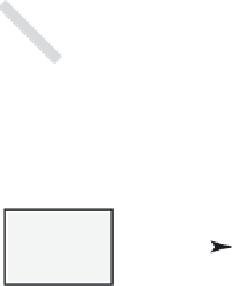Graphics Reference
In-Depth Information
Model
Volume model
SH coefficients
Filter
Precompute
Render
indirect
SH phase
function
Smooth coeffs.
Render
direct
Image
Figure 8.60
A schematic illustration of the spherical harmonics method of computing multiple scatter-
ing in hair.
(From [Moon et al. 08] c
2008 ACM, Inc. Included here by permission.)
scattering bias, the color washes out to a neutral gray. This illustrates the impor-
tance of the directionality of scattering in a hair volume.
The particle simulation approach in Moon and Marschner's 2006 paper can
accurately simulate multiple scattering in hair, but it has the drawbacks of large
storage requirements of the photon map and the computational cost of the particle
simulation. In 2008, Moon, Bruce Walter, and Marschner presented a different
approach in a paper entitled “Efficient Multiple Scattering in Hair Using Spherical
Harmonics” [Moon et al. 08]. Figure 8.60 contains an outline of the method.
As in many rendering algorithms, the rendering is split into direct and indirect
illumination. The direct illumination is computed using ray tracing or any other
suitable technique. The method of computing the indirect component is the novel
part of the work.
The indirect illumination is computed using a two-pass method similar to the
photon-mapping approach: the first pass is a simulation process that traces light
paths, and the actual rendering is done in the second pass. In order to make the
first pass (light tracing process) more efficient, the hair volume is voxelized. That
is, a grid of voxels covering the hair volume is constructed so that each voxel
in the voxel grid contains the average density and direction of the hair fibers in
the voxel. Each voxel also stores a directionally dependent radiance distribution
represented by spherical harmonics. The simulation pass works by tracing ran-
dom rays from the light through the grid (
Figure 8.61
)
. Radiance is deposited























































































































































































